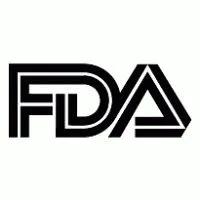Article
Potentially Inappropriate Prescribing Practices Linked to Opioid Overdose Risk
Author(s):
Researchers identified 6 types of potentially inappropriate prescriptions, all of which were associated with higher hazards for all-cause mortality, 4 with non-fatal overdose, and 5 with fatal overdose.

Adam J. Rose, MD, MSc
Potentially inappropriate prescribing practices may contribute to opioid overdose, with new data showing they were associated with a higher risk of all-cause mortality, and both fatal and non-fatal overdose.
In total, the data revealed that more than 50% of adults in Massachusetts, where data was pulled from, received at least 1 opioid prescription during the 5-year study period, of which more than 11% in the received at least 1 risky prescription. The findings detailed that more than 6% of adults in the state received a potentially inappropriate opioid prescription.
The researchers identified 6 types of potentially inappropriate prescriptions, all of which were associated with higher adjusted hazard ratios (HR) for all-cause mortality, 4 with non-fatal overdose, and 5 with fatal overdose.
Led by Adam J. Rose, MD, MSc, a physician policy researcher at the RAND Corporation, the research team explored data from 3,078,034 patients aged 18 years or older, without cancer, who received an opioid prescription between 2011 and 2015. Cox proportional hazard models were used to identify the prescription practices associated with the 3 measured outcomes, with the researchers controlling for covariates.
“In some states, clinicians are mandated to check the prescription monitoring program database before prescribing—every single time,” Rose told MD Mag. “In states that don’t have such a mandate, we would urge clinicians to do so voluntarily—every time. It could save a life.”
The 6 types of risky opioid prescriptions identified were as follows:
- Morphine equivalent dose ≥100 mg/day in ≥ 3 months.
- Overlapping opioid and benzodiazepine prescriptions in ≥ 3 months.
- ≥4 opioid prescribers in any quarter.
- ≥4 opioid-dispensing pharmacies in any quarter.
- Cash purchase of prescription opioids on ≥ 3 occasions.
- Receipt of opioids in 3 consecutive months without a documented pain diagnosis.
The results showed that lacking a documented pain diagnosis was associated non-fatal overdose (adjusted HR, 2.21; 95% CI, 2.02 to 2.41) as were high-dose opioid prescriptions (adjusted HR, 1.68; 95% CI, 1.59 to 1.76). All-cause mortality was linked to both high-dose opioids (adjusted HR, 2.18; 95% CI, 2.14 to 2.23) and lacking a documented pain diagnosis (adjusted HR, 2.05; 95% CI, 2.01 to 2.09) as well.
“The large effect size for the no pain diagnosis variable [was surprising],” Rose said. “It was one of the strongest predictors of bad outcomes.”
Meanwhile, an overlapped benzodiazepine prescription was associated with fatal overdose (adjusted HR, 4.23; 95% CI, 3.85 to 4.65).
In comparison with those who received opioids without a potentially inappropriate prescription, the hazard ratio for a fatal overdose with 1, 2, 3, and ≥4 subtypes of inappropriate prescriptions was 4.24, 7.05, 10.28, and 12.99, respectively (test of linear trend, P <.001).
Opioid use disorders impact roughly 9 out of every 1,000 Americans and opioid overdose-related deaths have quadrupled over the past 15 years, according to public health estimates. Multiple health campaigns have begun in order to educate prescribers and patients alike on the danger of high-dose opioids, and the importance of low-dose and limited-duration initial prescriptions.
Rose and colleagues noted that the data suggests that possibly creating a risk score which would incorporate multiple subtypes of potentially inappropriate prescriptions, which then could be displayed to prescribers in real time, would be of great use. The scale of a program of this type, however, is limited by the resources and scope of prescription drug monitoring programs (PDMPs).
“It would be difficult to implement nationwide risk scores due to limitations on interoperability,” Rose said. “But, to the extent that state PDMPs are able to communicate with each other more and more as time goes on, that could contribute to a national risk score. For now, it may be at the state level, and only in states with a more robust and functional PDMPs. Not all states have equally robust or functional PDMPs.”
The study, “Potentially Inappropriate Opioid Prescribing, Overdose, and Mortality in Massachusetts, 2011—2015,” was published in the Journal of General Internal Medicine.





